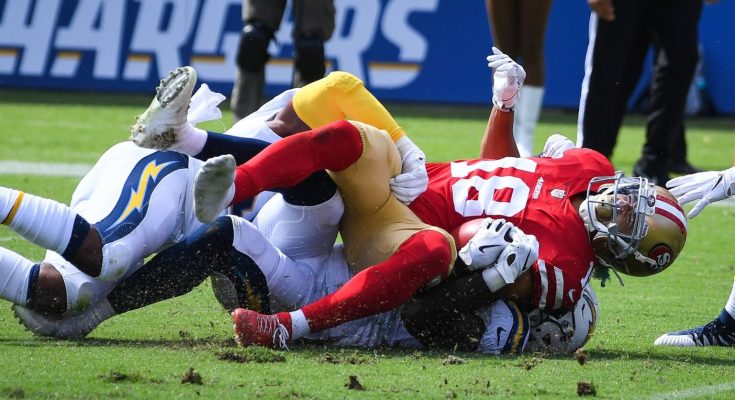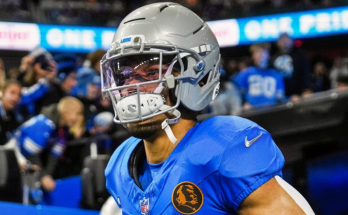What Is The New Injury Reserve Rule And How Does It Affect The NFL 53-Man Roster Deadline?

We’ve hit one of the biggest milestones of the year. With preseason wrapped up, NFL teams must now trim their rosters to 53 players before the 2024 regular season kicks off. That’s right—it’s the 53-man roster deadline. On August 27, 2024, all 32 teams had to cut down their rosters to 53 players, a process that’s full of tough decisions, strategic moves, and plenty of stress.
In the past, putting a player on injured reserve meant they were done for the year. Teams either had to say goodbye to that player for the whole season or gamble and wait until after the roster cuts to see if they could bring them back. It was a tricky balancing act between keeping a solid roster and risking losing a key player for the entire season. But in 2024, things are different. Here’s what we need to know about the new 53-man roster deadline rules.
What Is The Injury Reserve Rule?

This year, the NFL significantly changed how teams handle injured players. Now, teams can place up to two players on injured reserve and bring them back after just four games. At the 53-man roster deadline, teams must trim their rosters to 53 players. Teams release players with four or more years of experience outright, making them free agents immediately. Those with less experience go through waivers, allowing other teams to claim them based on priority. If no one claims them, they become free agents.
Trading players can also influence roster decisions. Teams might trade players for draft picks or negotiate new contracts, which affects salary cap space. Traded players keep their contracts with their new teams while the original team absorbs any remaining dead money.
After the roster cutdown, teams have a short waiver period. They then build practice squads, including up to 16 players or 17 if they add an International Pathway Program player. Teams can also place players on Reserve/Injured or Reserve/PUP lists, which affect roster spots and salary cap considerations. While today’s 53-man rosters might look final, there’s still plenty of action ahead. The waiver wire will be busy as teams seek to add talent released by others, and practice squads and roster adjustments continue. The new IR rule gives teams valuable flexibility, enhancing their strategy and injury management without sacrificing roster depth.
Also Read: Ranking All 32 NFL Head Coaches For The 2024 Season From WORST To FIRST
How Will The NFL Rule Change Impact Teams?

This new rule will dramatically change how the NFL teams shape their rosters. This rule offers new opportunities for teams like the Minnesota Vikings. The Vikings face tough choices with 91 players, including International Player Sammis Reyes, on their roster. Rookie quarterback J.J. McCarthy missed out on key timing earlier in the preseason. Had the Vikings waited to place him on IR, they could have designated him for return later in the year. The team might use the new rule for UDFA edge defender Gabriel Murphy, who was impressed in camp but was sidelined by injury.
The Dallas Cowboys also see this rule as a potential lifesaver. Chuma Edoga, who dislocated a toe in their preseason opener, might benefit from this IR flexibility. Instead of using a key roster spot, the Cowboys can place him on IR and potentially bring him back later, keeping rookie Tyler Guyton’s backup spot secure.
The 49ers closely watch how this rule could play out in San Francisco. With key defensive ends Leonard Floyd and Yetur Gross-Matos both dealing with knee injuries, the 49ers face a roster challenge. San Francisco might use the new IR rule to bring back Gross-Matos when he’s ready, even though he is expected to be out longer, without sacrificing depth on their defensive line. Head coach Kyle Shanahan hinted at their plans, leaving fans eager to see how they’ll handle these injuries.

The Detroit Lions are in a similar position. They’re looking at this rule to manage injuries to players like John Cominsky and Emmanuel Moseley. The Lions need to balance maintaining depth with making strategic IR decisions. The Kansas City Chiefs also face the challenge of trimming their 90-man roster to 53 players.
The Indianapolis Colts also had to cut their roster to 53 players by Tuesday at 4 p.m., down from the 91 they started with in late July. Injuries will probably send defensive lineman Samson Ebukam and tight end Jelani Woods to injured reserve. Centers Wesley French, Ryan Coll, and safety Daniel Scott are also expected to join them.
This new rule clearly provides flexibility to keep key players without permanently committing to their spots. For players, it’s a lifeline—a chance to stay in the game and make a comeback later in the season. As the cutdown deadline approaches, it’s evident that this rule will be crucial in how teams build their rosters for the demanding season ahead.
Also Read: 11 NFL Expansion Franchises You Didn’t Know ALMOST Happened


